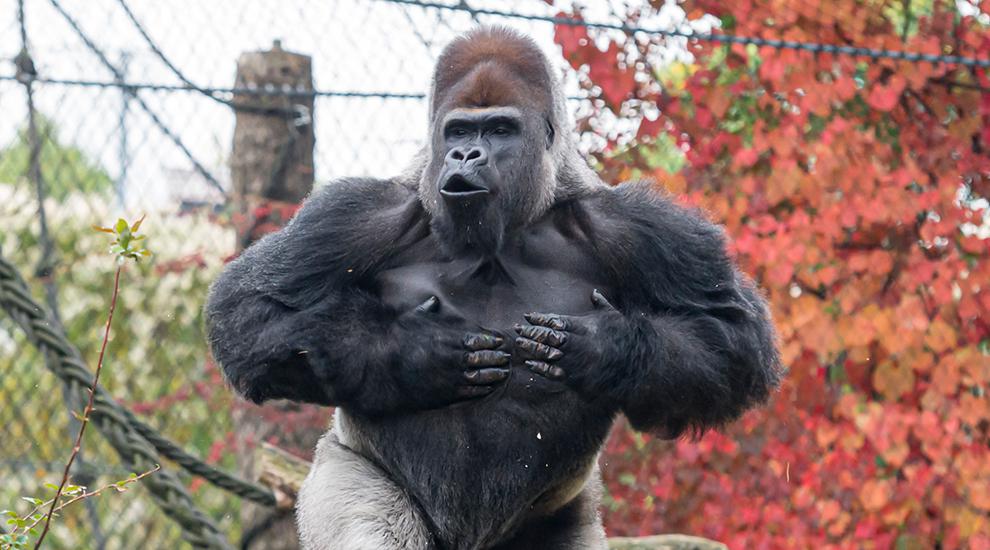

Aggression in gorillas is rare, and serious fights only occur when another silverback is encountered: then, the 2 males perform elaborate threat displays. Instead, the bond between each female and the silverback is what holds the group together. The social ties between females are weak. A powerful silverback who can effectively protect offspring from danger is preferred. Females are choosy about what troop to join. Female gorillas leave their natal group at puberty to join other groups.


The silverback male maintains the group's cohesion. Groups are called "troops." Troop sizes range from 2 - 35 members, averaging 10 - 20. The group is usually comprised of 1 silverback, or dominant male, adult females, maturing males, juveniles and infants it is considered a polygynous society (1 male mates with multiple females in a single breeding season). Gorillas are diurnal (active during the day), but typically rest during the hottest part of the day. Their faces, feet, upper chest and the palms of their hands are hairless. Gorillas have prominent brown ridges and small ears. Although gorillas are well-adapted for ground dwelling, they have opposable thumbs and toes that allow them to grasp objects such as tree branches. Gorillas' arms are longer than their legs, a feature that enables them to walk comfortably on all fours. Gorillas have large, muscular bodies and adult males are particularly massive in the chest and shoulders. As they age, males get a broad silvery-white saddle on their back, from which the term "silverback" for dominant males was derived. They are sexually dimorphic (2 distinct gender forms): males weigh approximately twice as much as females. Gorillas are black to brown-gray in color and start to turn gray with age.


 0 kommentar(er)
0 kommentar(er)
